See below for an example implementation extension method below that uses reflection to pivot an IEnumerable<T>.
Example Usage Pivot()
// Test Type
public record MyObj(string Prop1, int Prop2, int Prop3);
// test data
var list = new List<MyObj> {
new MyObj("AAA", 1123, 400),
new MyObj("BBB", 2123, 500),
new MyObj("CCC", 3123, 600)
};
Console.Write(list.Pivot());

Example Usage Pivot() w/ ColumnSelector
Example 1
Console.Write(list.Pivot( pivotOn: (f)=>f.Prop1));

Example 2
Console.Write(list.Pivot( pivotOn: (f)=>f.Prop2));

Implementation
public static class PivotExtension
{
public static IEnumerable<ExpandoObject> Pivot<T>(this IEnumerable<T> objs)
{
var objArray = objs.ToArray();
var properties = typeof(T).GetProperties();
foreach (var property in properties)
{
var obj = new ExpandoObject();
var objDic = (IDictionary<string, object>)obj;
objDic.Add("Name", property.Name);
for (int i = 1; i < objs.Count(); i++)
objDic.Add($"Row_{i.ToString()}", property.GetValue(objArray[i]));
yield return obj;
}
}
public static IEnumerable<ExpandoObject> Pivot<T, TValue>(this IEnumerable<T> objs, Expression<Func<T, TValue>> pivotOn)
{
var objArray = objs.ToList();
var properties = typeof(T).GetProperties();
var pivotProperty = pivotOn.GetProperty();
//header
var cnt = 1;
var pivotHeader = new Dictionary<int, string>{{0, pivotProperty.Name}};
objArray.ForEach(r=> pivotHeader.Add( cnt++, pivotProperty.GetValue(r).ToString()));
//rotate
foreach (var property in properties.Where(r=> !pivotHeader.ContainsValue(r.Name)))
{
var obj = new ExpandoObject();
var objDic = (IDictionary<string, object>)obj;
objDic.Add(pivotHeader[0], property.Name);
for (int i = 0; i < objs.Count(); i++)
objDic.Add($"{pivotHeader[i+1]}", property.GetValue(objArray[i]));
yield return obj;
}
}
public static PropertyInfo GetProperty<T, TValue>(this Expression<Func<T, TValue>> expression)
{
return GetProperty(expression.Body);
}
private static PropertyInfo GetProperty(Expression body)
{
MemberExpression memberExpression;
switch (body.NodeType)
{
case ExpressionType.Convert:
memberExpression = (MemberExpression)((UnaryExpression)body).Operand;
break;
case ExpressionType.MemberAccess:
memberExpression = (MemberExpression)body;
break;
default:
throw new ArgumentOutOfRangeException();
}
return (PropertyInfo)memberExpression.Member;
}
}


